

Final Project
by
Jackson Huckaby
Graph the parabola
![]()
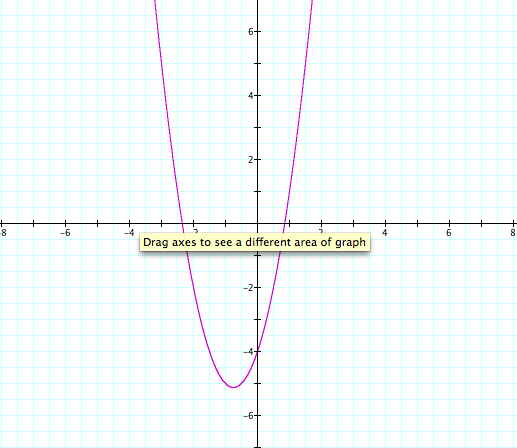
i. Overlay a new graph replacing each x by (x-4).
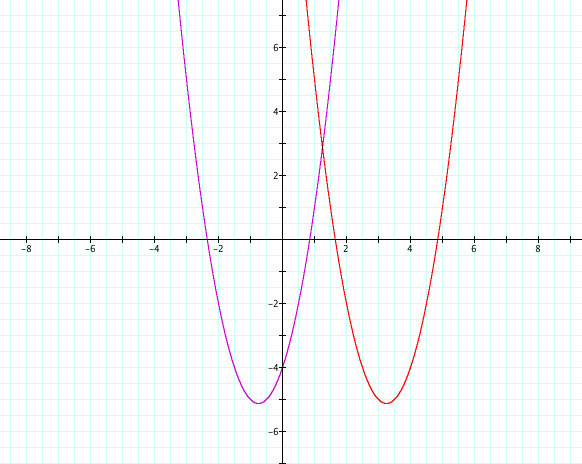
ii. Change the equation to move the vertex of the second (red) graph into the second quadrant.
To do this I simply changed the -4 to a +4
![]()

iii. Change the equation to produce a graph concave down that shares the same vertex.
The first thing we may try would be to simply put a negative in front of the equation, this gives us our concave down that we wanted:

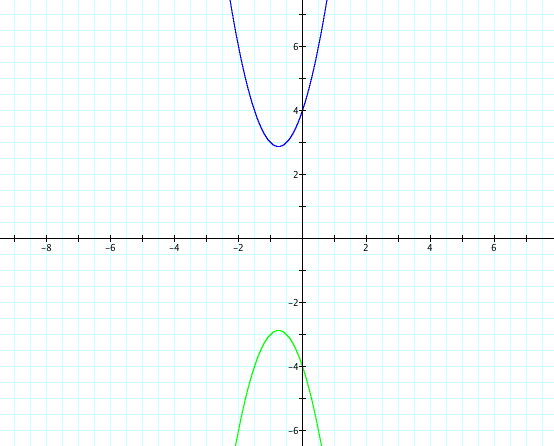
However, what we have done here is reflected our graph over the x axis. So our vertex is far to low.
What should our y coordinate of the vertex be? We can use the formula for a vertex and discover this:


![]()
So we need a y coordinate of 23/8. But what is our y coordinate? Using the same equation for the green graph we find that our coordinate is -23/8.
So if we add 2(-23/8) to our original reflection, we should shift our graph vertically enough units to merge the vertex.
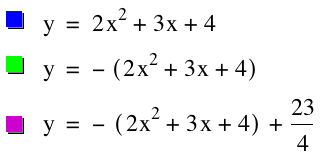
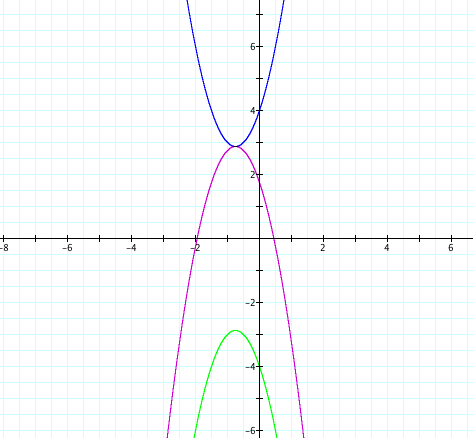
iv. Generalize:
So what have we learned?
Part i of this problem taught us that by adding or subtracting to the x term we can move our parabola to the left or right. Making x (x-4) shifted our graph to the right, and likewise making our x into (x+4) we would shift our graph to the left. Part ii of the problem let us discover how to vertically shift our parabola. We did this by increasing the constant at the end of our equation. When the constant become positive our graph is above the x axis.
The last thing we looked into was how to change the concavity of the parabola. We were able to simply multiply the equation through by a negative and get our parabola to open downward. However, what we needed was the same vertex and our y coordinate was not the same. So what we figured out was that we needed to add twice the original Y vertex to shift our equation back to the original vertex. Does this always work? Yes. The reasoning is that When we reflect the vertex over the x axis we are simply keeping the same distance from the x axis and just flipping it down, so now we are twice the distance we originally were. So by adding twice this distance back to the end (using what we learned in step ii) we can now achieve our desired vertex!
Return to Final Project